 Fred Bernard Wood was not the athletic type in terms of organized sports, but he loved to hike and camp. Besides the exercise, he found that hiking was an effective stimulus to his creative thought process. He occasionally mentioned “communing with Nature” and “being inspired by the outdoors” as important to his technical, philosophical, and systems research. His love of the outdoors also no doubt contributed to his strong identification with and advocacy for environmental protection and conservation.
Fred Bernard Wood was not the athletic type in terms of organized sports, but he loved to hike and camp. Besides the exercise, he found that hiking was an effective stimulus to his creative thought process. He occasionally mentioned “communing with Nature” and “being inspired by the outdoors” as important to his technical, philosophical, and systems research. His love of the outdoors also no doubt contributed to his strong identification with and advocacy for environmental protection and conservation.
This is but a snapshot of his love of the outdoors and his high regard for Gaia in all its manifestations.
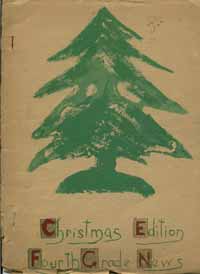 Fred Bernard began his hiking and camping experience as a youngster. The California Redwood Trees were near and dear to Fred Bernard’s heart. From an early age, he used his artistic abilities to include Redwood and other evergreen trees in his various projects. He was active in scouting, and attained the rank of Eagle Scout. The merit badges required of him to become an Eagle Scout reflected his numerous outdoors accomplishments and activities in the San Francisco Bay Area and beyond.
Fred Bernard began his hiking and camping experience as a youngster. The California Redwood Trees were near and dear to Fred Bernard’s heart. From an early age, he used his artistic abilities to include Redwood and other evergreen trees in his various projects. He was active in scouting, and attained the rank of Eagle Scout. The merit badges required of him to become an Eagle Scout reflected his numerous outdoors accomplishments and activities in the San Francisco Bay Area and beyond.
As a parent, husband, and father, Fred Bernard took some or all of his family on numerous camping trips around the State of California, and most of these trips included hikes of some sort. Here is a partial list of the camping travels of the Wood III family up until the time that his two sons, Fred and Peter, left home for college.
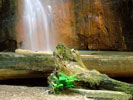
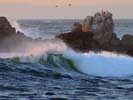


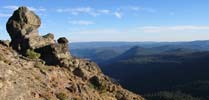
Big Basin Redwoods State Park, Boulder Creek, CA
Portola Redwoods State Park, Boulder Creek, CA
Henry Cowell Redwoods State Park, Scotts Valley, CA
Asilomar State Beach, Monterey, CA (also used for Unitarian Church retreats)
Pfeiffer Big Sur State Park, Big Sur, CA
Blue Lakes, Lake County, CA (stayed several times at a private campground)
Yosemite National Park, Yosemite, CA
Kings Canyon National Park, Three Rivers, CA
Pinnacles National Monument,Paicines, CA
Devils Postpile National Monument, Mammoth Lakes, CA
Lassen Volcanic National Park, Mineral, CA
Fallen Leaf Lake, Lake Tahoe, South Lake Tahoe, CA (stayed several times at the Stanford University vacation and retreat center)
Echo Lake, near Lake Tahoe, Echo Lake, CA (stayed several times at the City of Berkeley, CA, family & youth camp)
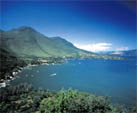


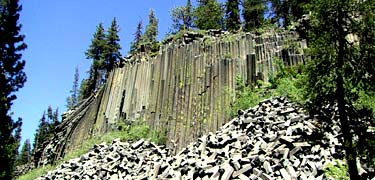
In his mid-life and through his retirement years, while still in good health and active professionally, Fred Bernard continued to go on regular hikes in the San Francisco Bay Area, and especially the trails in the foothills behind Berkeley, CA, and in the South Bay both along the South San Francisco Bay, and in the hills to the East (Mt. Hamilton Range), to the South (Almaden and Mt. Madonna), and to the West (Santa Cruz Mountains of the Coast Range). Many of these hikes were done solo, which allowed Fred Bernard to connect undisturbed with Nature, Higher Consciousness, Creative Thought, and Meditation.
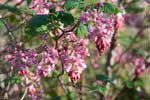

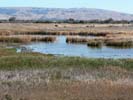
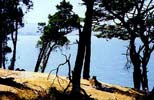
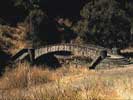
Tilden Regional Park, Berkeley and Oakland, CA
Wildcat Canyon Regional Park, Berkeley and Oakland, CA
Coyote Hills Regional Park, Fremont, CA
Coyote Point Park, San Mateo, CA
Alum Rock Park, San Jose, CA
Guadalupe River Trail, San Jose, CA
Vasona and Los Gatos Creek County Park,Los Gatos, CA
Almaden Quicksilver County Park, Santa Clara County, CA
Mt. Madonna County Park, Santa Clara County, CA
And Fred Bernard ranged to the north of San Francisco as well, including, for example:
Point Reyes National Seashore, Point Reyes Station, CA
Muir Woods National Monument, Mill Valley, CA
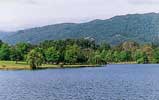
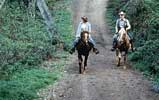
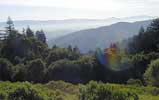
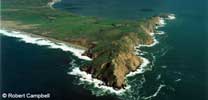
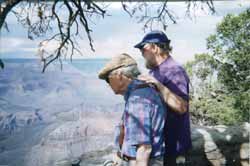 By the time Fred Bernard moved out of the S.F. Bay Area to Flagstaff, AZ, his health issues limited his hiking ability. He did walk around his neighborhood, and, when he was able, local parks in the Flagstaff and Sedona, AZ, area. These included Buffalo Park, a Flagstaff city park with a wonderful view of the San Francisco Peaks.
By the time Fred Bernard moved out of the S.F. Bay Area to Flagstaff, AZ, his health issues limited his hiking ability. He did walk around his neighborhood, and, when he was able, local parks in the Flagstaff and Sedona, AZ, area. These included Buffalo Park, a Flagstaff city park with a wonderful view of the San Francisco Peaks.
In his last year or so, he occasionally visited the rural cabin of Lorraine Ferrante and Larry Wood near Snowflake, AZ. Here, he enjoyed meditating from near the cabin high on the rocks with the wide open spaces of Northeast Arizona before him.


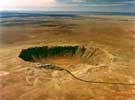


Fred Bernard’s last outdoors trips with one or both of his two sons included visits to:
Hopi Nation, Northeast Arizona (visited for consultation with Hopi Indian elders)
Meteor Crater Park, 35 miles east of Flagstaff, AZ (impact site of a large meteor)
Museum of Northern Arizona, Flagstaff, AZ (visited to view Native American anthropology and archaeology collections)
Lowell Observatory, Flagstaff, AZ (with several telescopes for viewing the solar system and galaxy and beyond)
Historic Williams Train Depot, Grand Canyon Railway, Williams, AZ
Grand Canyon National Park, South Rim,Grand Canyon, AZ



 These sites are indicative of three of Fred Bernard’s enduring interests: in the mysteries of outer space and concern about threats to Earth from asteroids and comets, or possibly even a rogue planet; in the value of trains as a mode of transportation that was handicapped by the dominance of the gasoline and automobile industries, and in need of a revival (and new sources of energy); and in the majesty of our natural resources and reverence for Nature and Life as reflected in the culture, vision, and spirituality of the American Indians who lived in these lands since long ago.
These sites are indicative of three of Fred Bernard’s enduring interests: in the mysteries of outer space and concern about threats to Earth from asteroids and comets, or possibly even a rogue planet; in the value of trains as a mode of transportation that was handicapped by the dominance of the gasoline and automobile industries, and in need of a revival (and new sources of energy); and in the majesty of our natural resources and reverence for Nature and Life as reflected in the culture, vision, and spirituality of the American Indians who lived in these lands since long ago.

 Fred Bernard Wood was not the athletic type in terms of organized sports, but he loved to hike and camp. Besides the exercise, he found that hiking was an effective stimulus to his creative thought process. He occasionally mentioned “communing with Nature” and “being inspired by the outdoors” as important to his technical, philosophical, and systems research. His love of the outdoors also no doubt contributed to his strong identification with and advocacy for environmental protection and conservation.
Fred Bernard Wood was not the athletic type in terms of organized sports, but he loved to hike and camp. Besides the exercise, he found that hiking was an effective stimulus to his creative thought process. He occasionally mentioned “communing with Nature” and “being inspired by the outdoors” as important to his technical, philosophical, and systems research. His love of the outdoors also no doubt contributed to his strong identification with and advocacy for environmental protection and conservation. Fred Bernard began his hiking and camping experience as a youngster. The California Redwood Trees were near and dear to Fred Bernard’s heart. From an early age, he used his artistic abilities to include Redwood and other evergreen trees in his various projects. He was active in scouting, and attained the rank of Eagle Scout. The merit badges required of him to become an Eagle Scout reflected his numerous outdoors accomplishments and activities in the San Francisco Bay Area and beyond.
Fred Bernard began his hiking and camping experience as a youngster. The California Redwood Trees were near and dear to Fred Bernard’s heart. From an early age, he used his artistic abilities to include Redwood and other evergreen trees in his various projects. He was active in scouting, and attained the rank of Eagle Scout. The merit badges required of him to become an Eagle Scout reflected his numerous outdoors accomplishments and activities in the San Francisco Bay Area and beyond. 
















 By the time Fred Bernard moved out of the S.F. Bay Area to Flagstaff, AZ, his health issues limited his hiking ability. He did walk around his neighborhood, and, when he was able, local parks in the Flagstaff and Sedona, AZ, area. These included
By the time Fred Bernard moved out of the S.F. Bay Area to Flagstaff, AZ, his health issues limited his hiking ability. He did walk around his neighborhood, and, when he was able, local parks in the Flagstaff and Sedona, AZ, area. These included 







 These sites are indicative of three of Fred Bernard’s enduring interests: in the mysteries of outer space and concern about threats to Earth from asteroids and comets, or possibly even a rogue planet; in the value of trains as a mode of transportation that was handicapped by the dominance of the gasoline and automobile industries, and in need of a revival (and new sources of energy); and in the majesty of our natural resources and reverence for Nature and Life as reflected in the culture, vision, and spirituality of the American Indians who lived in these lands since long ago.
These sites are indicative of three of Fred Bernard’s enduring interests: in the mysteries of outer space and concern about threats to Earth from asteroids and comets, or possibly even a rogue planet; in the value of trains as a mode of transportation that was handicapped by the dominance of the gasoline and automobile industries, and in need of a revival (and new sources of energy); and in the majesty of our natural resources and reverence for Nature and Life as reflected in the culture, vision, and spirituality of the American Indians who lived in these lands since long ago.